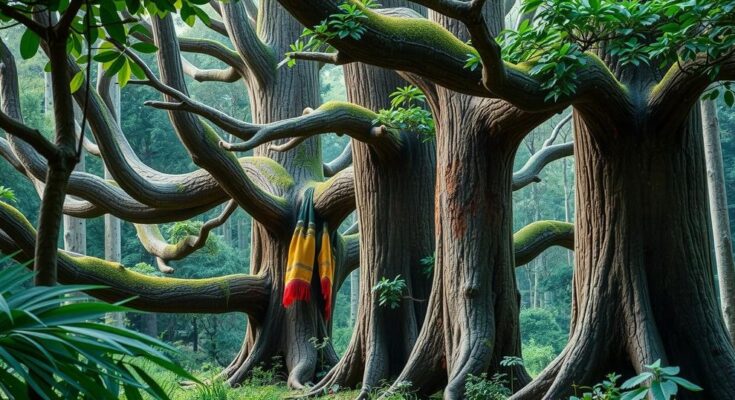The Rwandan government is mapping native legacy trees to preserve cultural narratives, enhance eco-tourism, and engage in the carbon market. Legacy trees provide ecological resilience and significant carbon storage while being vital to Rwanda’s history. This project encompasses community engagement, education, and policy development for tree conservation.
The Rwandan government is initiating a project to identify and map native legacy trees across the nation. This initiative aims to gather historical and cultural narratives related to these trees for preservation, eco-tourism, and to engage with the carbon market. Philippe Kwitonda, the Director General for Land, Water, and Forestry at the Ministry of Environment, explains that legacy trees represent the largest and oldest native trees which have withstood challenges from agricultural expansion and urban development.
These legacy trees, due to their age and ecological diversity, demonstrate greater resilience to climate change and disturbances, including storms and pest infestations. The carbon market serves as a mechanism for providing financial support for greenhouse gas reduction projects while enabling climate polluters to meet their emission targets.
In addition to their historical value, legacy trees often have a higher carbon storage capacity compared to younger ones due to their significant size. For instance, ‘Icubya,’ a 300-year-old shrine tree in the Rutunga Sector of Gasabo District, serves as a notable legacy tree linked to Rwanda’s early history and cultural practices.
Philippe Kwitonda articulated that the identification process will lead to the formulation of protective policies for these historic trees. Additionally, a proposed ‘Legacy Tree Tour’ aims to encourage eco-tourism and community engagement in conservation efforts, thereby raising awareness about these significant natural landmarks.
Beth Kaplin, a Senior Researcher at the University of Rwanda, emphasizes the importance of integrating scientific research with traditional knowledge in this endeavor. The collaborative effort seeks to improve biodiversity, strengthen the relationship between humans and nature, and conserve native seed sources essential for reforestation.
A national registry of legacy trees will help highlight their ecological and cultural importance, ultimately supporting Rwanda’s commitments to international biodiversity frameworks. Concorde Nsengumuremyi, Director General of the Rwanda Forestry Authority, noted the link between older trees and their enhanced capacity to sequester carbon emissions, thus generating carbon credits that could boost Rwanda’s economy significantly.
The Legacy Tree Project represents an essential effort towards the protection of indigenous forests and promotes sustainable development through education and tourism, encouraging a collective commitment from communities, landowners, and government institutions.
In conclusion, the Rwandan government’s initiative to map and identify legacy trees underscores the importance of preserving natural heritage for cultural, ecological, and economic benefits. This project aims to enhance biodiversity conservation, facilitate eco-tourism, and engage with the carbon market, while simultaneously fostering community involvement and education about Rwanda’s rich history and natural resources.
Original Source: www.newtimes.co.rw




